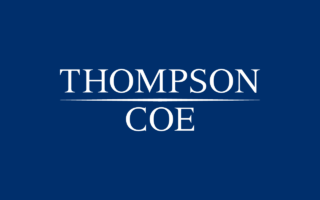Coverage for Copyright Infringement in the Marketing of Computer Software: The Insurer’s Perspective
Mar 4, 2004
Under most general liability policies, copyright infringement would be covered, if at all, only under the advertising injury coverage (or, in more recent forms, the “personal and advertising injury” coverage). As Coverage A applies only to bodily injury and property damage, it simply will not apply to most claims for copyright infringement. See, e.g., Robert Bowden, Inc. v. Aetna Cas. & Sur. Co., 977 F. Supp. 1475, 1478-79 (N.D. Ga. 1977) (damage to copyright interest involved intangible property). Coverage B, however, includes enumerated offenses committed in the course of advertising.
Under the insuring agreements of most general liability policies, including ISO forms from 1973 forward, copyright infringement is an enumerated offense within the advertising injury coverage.1
The Advertising Nexus
This is not the end of the story, however, as courts in most jurisdictions also construe the insuring agreement, which applies only to offenses committed in the course of advertising, to require a “nexus” between the covered offense and advertising. As enunciated by some courts, there must be (1) a covered offense, (2) the covered offense must take place in the course of advertising, and (3) the advertising must be the cause of damages. E.g., Sentry Ins. Co. v. R.J. Weber Co., 2 F.3d 554 (5th Cir. 1993); Novell, Inc. v. Federal Ins. Co., 141 F.3d 983, 990 (10th Cir. 1998); Everest & Jennings, Inc. v. American Motorists Ins. Co., 23 F.3d 226, 229 (9th Cir. 1994). The “nexus” requirement presents unique problems when applied to issues of copyright infringement, and particularly to claims arising from copyrighted computer software.
A seminal issue is what constitutes an advertisement. In policies prior to 1998, the insuring agreement includes a requirement that the offense be committed during the policy period and in the course of the insured’s advertising activities. “Advertising,” however, is undefined. Thus, courts have struggled with what constitutes “advertising.” Most courts, however, have concluded that advertising refers to widespread dissemination, and not to one-on-one solicitations or proposals. E.g., International Ins. Co. v. Florists Mut. Ins. Co., 559 N.E.2d 7, 9-10 (Ill. App. 1990); Playboy Enterp. v. St. Paul Fire & Marine Ins. Co., 769 F.2d 425, 428-29 (7th Cir. 1985). This distinction can be important if the advertising is not through printed materials, but through demonstrations or promotional distribution of software.
In the 1998 form, “advertisement” was defined as “a notice that is broadcast or published to the general public or specific market segments about your goods, products or services for the purpose of attracting customers or supporters.” Personal injury and advertising injury are combined, and the definitions are refined. Under the 1998 form, while copyright infringement is still included as an enumerated offense, it is re-defined as “infringing upon another’s copyright, trade dress or slogan in your ‘advertisement.’” This refinement should reinforce the “nexus” requirement between the offense and advertising. But see Phoenix Control Systems, Inc. v. Ins. Co. of N. America, 796 P.2d 463 (Ariz. 1990) (construing similar language, court applied antecedent rule to conclude that “in your advertising” modified only “slogan.”)
In 2001, the advertising injury coverage was again re-written in the ISO form, to include several specific references to internet activity. “Advertisement” was re-defined as follows:
“Advertisement” means a notice that is broadcast or published to the general public or specific market segments about your goods, products or services for the purpose of attracting customers or supporters. For the purposes of this definition:
-
- Notices that are published include material placed on the Internet or on similar electronic means of communication; and
-
- Regarding websites, only that part of the website that is about your goods, products or services for the purpose of attracting customers or supporters is considered an advertisement.
The 2001 form also includes a limited exclusion of insurance coverage for copyright infringement, providing that the insurance does not apply to:
-
- Infringement of Copyright, Patent, Trademark or Trade Secret
-
- “Personal and advertising injury” arising out of the infringement of copyright, patent, trademark, trade secret or other intellectual property rights.
However, this exclusion does not apply to infringement, in your “advertisement”, of copyright, trade dress or slogan.
The net effect of the exclusion is simply to reinforce the requirement, under previous forms, that the copyright infringement must occur in the insured’s advertising.
The 2001 form also includes an exclusion for advertising injury arising out of an electronic chat room or bulletin board that the insured hosts, owns, or over which the insured exercises control.
The “advertising” requirement, when applied to copyrighted software, should follow the same guidelines applicable to other offenses. One-on-one demonstrations of software should not fall within coverage, as there is no widespread dissemination. Cf. First Bank and Trust Co. v. New Hampshire Ins. Group, 469 A.2d 1367, 1368 (N.H. 1983) (explanation of bank services not “advertising”); see also Solers, Inc. v. Hartford Cas. Ins. Co., 146 F.Supp.2d 785 (E.D. Va. 2001), aff’d, 36 Fed. Appx. 740, 2002 U.S. App. LEXIS 11405 (4th Cir., June 12, 2002) (bid proposal not advertising). Similarly, custom software, developed for a single client, is unlikely to be deemed “advertising.” Cf. Peerless Lighting Corp. v. American Motorists Ins. Co., 82 Cal.App.4th 995 (Cal. App. 2000) (solicitation of single customer through bidding process for tailor-made product not advertising). However, a demonstration to a group of people, especially if they are potential customers, could arguably satisfy the advertising requirement and give rise to coverage. See, e.g., Bear Wolf, Inc. v. Hartford Ins. Co. of The Southwest, 819 So.2d 818 (Fla. App. 2002), rev. denied, 839 So.2d 698 (Fla. 2003); Fireman’s Fund Ins. Co. v. Bradley Corp., 660 N.W.2d 666 (Wisc. 2003) (display at trade show constitutes advertising); New Hampshire Ins. Co. v. Fox Fire, Inc., 820 F. Supp. 489 (N.D. Cal. 1993) (where audience is small, but comprises all or significant portion of customer base, advertising requirement is met).
The most difficult issue is the connection between the copyright infringement and the advertising activity. Generally, courts are somewhat divided as to the extent of the connection required between the infringement and the advertising. As expressed by a number of courts, merely committing the offense, and then advertising the offending product, is not sufficient. As expressed by these courts, the advertising must include the offense that causes the injury, not merely reveal or expose it. See, e.g., Simply Fresh Fruit, Inc. v. Continental Ins. Co., 94 F.3d 1219, 1223 (9th Cir. 1996), cert. denied, 519 U.S. 965 (1996) (“advertising activities must cause the injury — not merely expose it.”); Able Corp. v. Liberty Mut. Corp., 33 Fed. Appx. 276, 2002 U.S. App. LEXIS 4468 (9th Cir., Mar. 13, 2002) (where brochure itself was not infringing, but merely advertised infringing product, causal connection was not established); but cf. Fidelity & Guar. Ins. Co. v. Kocolene Marketing Corp., 2002 U.S. Dist. LEXIS 8518 (S.D. Ind., Mar. 26, 2002) (cigarette packaging that infringed trademark and trade dress was itself advertising); R.C. Bigelow, Inc. v. Liberty Mut. Ins. Co., 287 F.3d 242 (2nd Cir. 2002) (finding exception where the advertisement depicts trade dress, which may itself be advertising and is a style of doing business). The question, then, is what becomes sufficient? If the offending product is pictured in the advertisement, is that enough?
In cases involving copyrighted designs, courts have found both that the picture of the designed product (e.g., a rug with a copyrighted design) in the advertisement was sufficient, and that a picture of the copyrighted design was not sufficient, as the advertisement itself did not infringe the copyright. Compare Hosel & Anderson, Inc. v. ZV II, Inc., 2001 U.S. Dist. LEXIS 3216 (S.D.N.Y., Mar. 1, 2001) (copied carpet design did not involve infringement in advertising) with Interface, Inc. v. Standard Fire Ins. Co., 2000 U.S. Dist. LEXIS 14019 (N.D. Ga., Aug. 10, 2000) (infringement of copyright occurred in course of advertising).
In regard to copyrighted software programs, the nexus is even more attenuated. Mere duplication or use of software is not advertising. See, e.g., Robert Bowden, Inc. v. Aetna Sur. Co., 977 F. Supp. 1475 (N.D. Ga. 1997) (rejecting argument that use of software to conduct advertising campaign was sufficient connection). Mere advertising of a computer program, even by name, does not infringe the copyright — or even reveal the copyrighted work. A picture of the package may infringe trademarked names or logos, but does not display or infringe the copyrighted program itself. Thus, mere advertisement of copyrighted software will not fulfill the requirements of the insuring agreement to establish advertising injury coverage. See Information Spectrum, Inc. v. The Hartford, 834 A.2d 451 (N.J. App. 2003); Delta Computer Corp. v. Frank, 196 F.3d 589 (5th Cir. 1999); GAF Sales & Service, Inc. v. Hastings Mut. Ins. Co., 568 N.W.2d 165 (Mich. App. 1997), app. den’d, 586 N.W.2d 919 (1998); see also Skylink Tech., Inc. v. Assurance Co. of America, 2004 U.S. Dist. LEXIS 79 (N.D. Ill. 2004); but cf. Federal Ins. Co. v. Microsoft Corp., 1993 U.S. Dist. LEXIS 5467 (Jan. 15, 1993), vacated by settlement, 1994 U.S. Dist. LEXIS 21073 (W.D. Wash., Apr. 15, 1994) (acknowledging argument, but still finding some allegations could involve infringement in course of advertising).
On the other hand, a demonstration of software, at a trade show or other gathering of potential retail or wholesale customers, provides more fertile ground to establish coverage. At least one court has found coverage, concluding the policy was ambiguous and demonstrations of infringing software could constitute an offense in the course of advertising. Copart, Inc. v. Travelers Ins. Co., 1998 U.S. Dist. LEXIS 23454 (N.D. Cal. 1998), aff’d, 11 Fed. Appx. 815, 2001 U.S. App. LEXIS 6140 (9th Cir., Apr. 3, 2001) (software used in marketing demonstrations); but see Information Spectrum, Inc. v. The Hartford, 834 A.2d 451 (N.J. App. 2003).2
In addition, advertising through other media, such as television, offers the possibility that the software could be demonstrated in a way that disseminated the demonstration to a widespread audience. In these cases, it may be that the insured can establish the requisite nexus.
Similarly, in cases involving sample copies, or “free” downloads of abbreviated versions of software, there could be advertising that involves the actual use of the copyrighted material itself.3 But see Farmington Cas. Co. v. Cyberlogic Technologies, Inc., 996 F. Supp. 695 (E.D. Mich. 1998) (distribution of free version of infringing driver to all potential customers could constitute advertising; court rejected coverage, however, because driver could not advertise itself); cf. IDG, Inc. v. Continental Cas. Co., 275 F.3d 916 (10th Cir. 2001) (assuming free software could advertise itself, all allegations related to copying and sale of infringing programs, not promotional activity). Interactive websites that include software demonstrations arguably satisfy the nexus requirement. See Specific Impulse, Inc. v. Hartford Cas. Ins. Co., 2002 U.S. Dist. LEXIS 25600 (N.D. Cal., Sept. 17, 2002).
In addition to the mere sale of infringing software, issues may arise where the infringing software is installed and sold as part of the package. Generally, however, the same analysis applies. Where there is merely an advertisement of the system, including the allegedly infringing software, there should be no coverage. Where, however, the advertising efforts actually include some demonstration of the software, coverage may exist if the other requisites are met, and no exclusion applies.
While the Digital Millennium Copyright Act provides safe harbors for some internet activities, including some liability for copyright infringement, it does not protect all activity. The protection is predominantly for innocent Internet Service Providers, who have complied with the Act, and may be unaware of the infringing activity. It should not afford protection to developers or retailers for promotional websites.
The coverage analysis will be affected by the version of the policy at issue. There is no doubt that insurers have been attempting to limit the expansion of advertising injury coverage, and to separately underwrite and market specialty coverages for the technology industry. Although the law is not very well developed, the logical division, at least under pre-1998 forms, will be between those cases which involve some form of demonstration of the software in operation, which may invoke coverage, and those cases which involve merely printed material offering the infringing software for sale, which should not invoke coverage.
Even under the newer forms, the same issues regarding the nexus between copyright infringement and advertising will exist. While the new definition should make it more difficult to establish coverage for software demonstrations, the fact that “notice,” “broadcast,” and “published,” are not defined, and the fact that advertising to specific market segments is specifically recognized, still likely lead to arguments for coverage. In addition, the definition recognizes that “notices” include electronic means of communication. Thus, software demonstration is arguably an electronic means of communication, broadcast or published to a market segment regarding the goods, products or services of the insured. Of course, the counterargument for the insurer is that “broadcast” has a more recognized meaning, as a broadcast through established media, and that a demonstration would not typically be considered a publication or a “notice.”
While this paper focuses on copyright infringement, infringing software may give rise to coverage, based on other infringing characteristics, such as trade dress, if the causal connection is established. See, e.g., Decision One Corp. v. ITT Hartford Ins. Group, 942 F. Supp. 1038 (E.D. Pa. 1996) (no coverage for copyright infringement, but finding potential coverage for other Lanham Act claims arising from advertising); but see Microtec Research, Inc. v. Nationwide Mut. Ins. Co., 40 F.3d 968 (9th Cir. 1994) (no coverage for misappropriated code).
Common Exclusions
Even where coverage exists, a number of policy exclusions are potentially applicable. First, the policy excludes coverage for publication of material with knowledge of its falsity. In regard to infringement of intellectual property rights, the question arises whether infringing material is necessarily “false.” A debate has ensued among the courts, and commentators, as to whether this exclusion applies to all advertising injury offenses, or only those grounded in publication, such as libel and slander. See, e.g., Interface, Inc. v. Standard Fire Ins. Co., 2000 U.S. Dist. LEXIS 14019 (N.D. Ga., Aug. 10, 2000) (claims of copyright infringement arising from advertising material displaying infringing floor covering not within exclusion); Martin’s Herend Imports, Inc. v. Twin City Fire Ins. Co., 2000 U.S. Dist. LEXIS 8690 (S.D. Tex., Mar. 31, 2000).4 An increasing number of courts, however, are holding that the exclusion applies equally to all offenses. See A.J. Sheepskin & Leather Co., Inc. v. Colonial Ins. Co., 709 N.Y.S.2d 82 (N.Y. App. 2000) (applying exclusion to claims that insured was a “serial infringer” and had “deliberately sought to confuse the public”); Finger Furniture Co., Inc. v. Travelers Indem. Co., 2002 U.S. Dist. LEXIS 15351 (S.D. Tex., Aug. 19, 2002) (Magistrate’s recommendation) (implicitly acknowledging that exclusion could apply to a claim of trademark infringement); Atlantic Mut. Ins. Co. v. Terk Technologies Corp., 309 A.D.2d 22, 763 N.Y.S.2d 56 (N.Y. App. 2003) (knowledge of falsity applied to claims of intentional “passing off,” within coverage for misappropriation of advertising ideas). Thus, the knowing advertisement of infringing software should be excluded.
A separate exclusion applies to publication of material, if the first publication of the same or similar material precedes the policy inception. This exclusion enforces the fortuity requirement, and, to some extent, incorporates the “known loss” doctrine that exists in some states. See, e.g., Two Pesos, Inc. v. Gulf Ins. Co., 901 S.W.2d 495 (Tex. App.–Houston [14th Dist.] 1995, no writ) (continued trade dress infringement, after injunction, constituted known loss and would not be covered); Essex Ins. Co. v. Redtail Prods., Inc., 1998 U.S. Dist. LEXIS 18507 (N.D. Tex. 1998), aff’d, 213 F.3d 636 (5th Cir. 2000) (no coverage where complaints of trademark infringement preceded purchase of policy); Franklin v. Fugro-McClelland (Southwest), Inc., 16 F.Supp.2d 732 (S.D. Tex. 1997) (no coverage for knowing patent infringement preceding policy inception). Like the exclusion for knowledge of falsity, some courts have limited this exclusion to torts of defamation, although this appears to be a diminishing trend. Compare Irons Homebuilding, Inc. v. Auto Owners Ins. Co., 839 F. Supp. 1260, 1264 (E.D. Mich. 1993) and Arnette Optic Illusions, Inc. v. ITT Hartford Group, Inc., 43 F.Supp.2d 1088, 1090-97 (C.D. Cal. 1996) (limiting exclusion) with Applied Bolting, 942 F. Supp. at 1037; Tradesoft Tech, Inc. v. Franklin Mut. Ins. Co., 746 A.2d 1078 (N.J. App. 2000); Doskocil, Inc. v. Fireman’s Fund Ins. Co., 1999 U.S. Dist. LEXIS 9324 (N.D. Cal. 1999), aff’d, 41 Fed. Appx. 75, 2002 U.S. App. LEXIS 13610 (9th Cir., July 3, 2002); Matagorda Ventures, Inc. v. Travelers Lloyds Ins. Co., 209 F.Supp.2d 687 (S.D. Tex. 2001); Superperformance Internat’l, Inc. v. Hartford Cas. Ins. Co., 203 F.Supp.2d 587, 595 (E.D. Va. 2002), aff’d, 332 F.2d 215 (4th Cir. 2003), and Taco Bell Corp. v. Cont’l Cas. Co., 2003 U.S. Dist. LEXIS 4289 (N.D. Ill., Mar. 12, 2003) (rejecting limitations and applying exclusions).
In many intellectual property cases, this exclusion applies where there has been a “cease and desist” letter sent to the insured, prior to suit being filed, which also pre-dates policy inception. E.g., Matagorda Ventures, 208 F.Supp.2d 687. The exclusion applies even when the re-publication causes new and different harm. See Ringler Associates, Inc. v. Maryland Cas. Co., 80 Cal. App. 4th 1165, 1183 (2000); Applied Bolting Tech. Prods., Inc. v. U.S. Fid. & Guar. Co., 942 F. Supp. 1029, 1036-37 (E.D. Pa. 1996), aff’d, 118 F.3d 1574 (3d. Cir. 1997). Clearly, the exclusion would apply where there are continued advertisements of the same infringing software. However, courts have strictly construed the “same or similar” material. Thus, even if there is an advertising “theme” of the same software, but the ads portray the software in different ways, the exclusion may not be applicable. Moreover, as coverage for software is most likely in instances of demonstration, application of the exclusion will be uncertain, at best. As applied to promotional distribution of counterfeit versions of software, however, it seems reasonable that the exclusion would apply to all distribution of the same infringing software.
Another significant exclusion applies to advertising injury arising out of breach of contract, other than misappropriation of advertising ideas under an implied contract. Typically, this exclusion has been applied where the dispute arises out of a breach of a licensing agreement, rather than the more traditional suits between competitors. See, e.g., Ross v. Briggs & Morgan, 540 N.W.2d 843 (Minn. 1995) (claim for liquidated damages under contract excluded); Danube of N. America, Inc. v. Travelers Ins. Co., 2002 U.S. App. LEXIS 824 (breach of licensing agreement). Where the underlying infringement exists only because there has been a breach of a licensing agreement, upon which the damages are based, the exclusion should limit coverage. It will not apply, however, where there is an alternative, non-contractual basis for damage. See, e.g., Phoenix American, Inc. v. Atlantic Mut. Ins. Co., 2001 Cal. App. Unpub. LEXIS 458 (Cal. App., Dec. 24, 2001) (breach of licensing agreement in marketing of infringing software); see also Zurich Ins. Co. v. Killer Music, Inc., 998 F.2d 674 (9th Cir. 1993) (copyright infringement arose from contractual relationship, but could also sound in tort); TIG Ins. Co. v. Nobel Learning Communities, 2002 U.S. Dist. LEXIS 10070 (E.D. Pa. 2002) (same).
Other exclusions apply to “the failure of goods, products or services to conform with advertised quality or performance” and “the wrong description of the price of goods, products or services.” These exclusions apply simply to eliminate consumer claims under this coverage, and will not typically apply to infringement suits between competitors.
ISO forms prior to 1998 also include an exclusion for willful violation of a penal statute or ordinance. In 1998, the language was changed to “a criminal act.” While copyright infringement can be criminal, the exclusion will likely not apply, at least to a duty to defend, where less culpable conduct is also alleged.
In 1998, another exclusion was added to encompass injury “caused by or at the direction of the insured with the knowledge that the act would violate the rights of another and would inflict ‘personal and advertising injury.’” While largely untested, the exclusion clearly contemplates intentional infringement, and should limit indemnity, but may still not preclude a defense obligation unless all allegations involve intentional infringement. See, e.g., Central Mut. Ins. Co. v. Stunfence, Inc., 2003 U.S. Dist. LEXIS 20808 (N.D. Ill., Nov. 18, 2003).
Finally, coverage is excluded for offenses committed by insureds in the business of advertising, broadcasting, publishing or telecasting. Other coverage is available to these insureds, for an additional charge, under policies that extend to common media exposure.
Specialty Coverages
Specialty products are also available to those in the business of producing and selling software. As most of these policies are unique, rather than more generic forms, each policy must be reviewed carefully to determine the exact extent and scope of the coverage.
Many of the new policies, purporting to provide coverage for intellectual property or communications liability, specifically include coverage for copyright infringement – without any advertising requirement. Cf. Goodheart-Willcox Co. v. First Nat’l Ins. Co., 2001 U.S. Dist. LEXIS 6284 (N.D. Ill., May 8, 2001). There are typically exclusions for penalties and punitive damages, and may exclude knowing infringement or breach of contract (such as a licensing agreement). E.g., Goodheart-Willcox, 2001 U.S. Dist. LEXIS 6284.
Other policies afford internet media coverage for wrongful acts or content-based liability. Even where these policies do not designate specific offenses, copyright infringement should be covered.
Professional liability policies are also available for various technology or internet services. Coverage is frequently defined in terms of the service, and copyright infringement is likely covered where it relates to and arises in the course of the covered service. Similarly, technology E&O policies often include copyright infringement within the definition of a covered offense. Almost all of these policies will include some limitations on coverage for punitive or multiple damages, and for knowing infringement.
End Notes
1 Under the 1973 form, advertising injury coverage was sold as part of a broad form endorsement to the standard CGL policy, and specifically, included copyright infringement. Since 1986, advertising injury coverage has been included as part of “Coverage B” to the standard ISO form. Prior to 1998, the definition of advertising injury included “infringement of copyright, title or slogan.” Forms after 1998 include “infringing upon another’s copyright, trade dress or slogan in your ‘advertisement.’”
2 A similar argument was made by commentators in regard to coverage for patent infringement. While most courts have rejected coverage for patent infringement, they have done so on other grounds, and there has not been much focus on the argument of demonstration as advertising.
3 Again, a similar argument was made, but largely overlooked, in the battle over coverage for patent infringement.
4 Prior to 1978, “publication” was a significant component of copyright law. “Publication” is defined in the Copyright Act to include distribution of copies of a work to the public by sale. The Act also provides that offering to distribute copies constitutes publication, but public performance does not, of itself, constitute publication.







